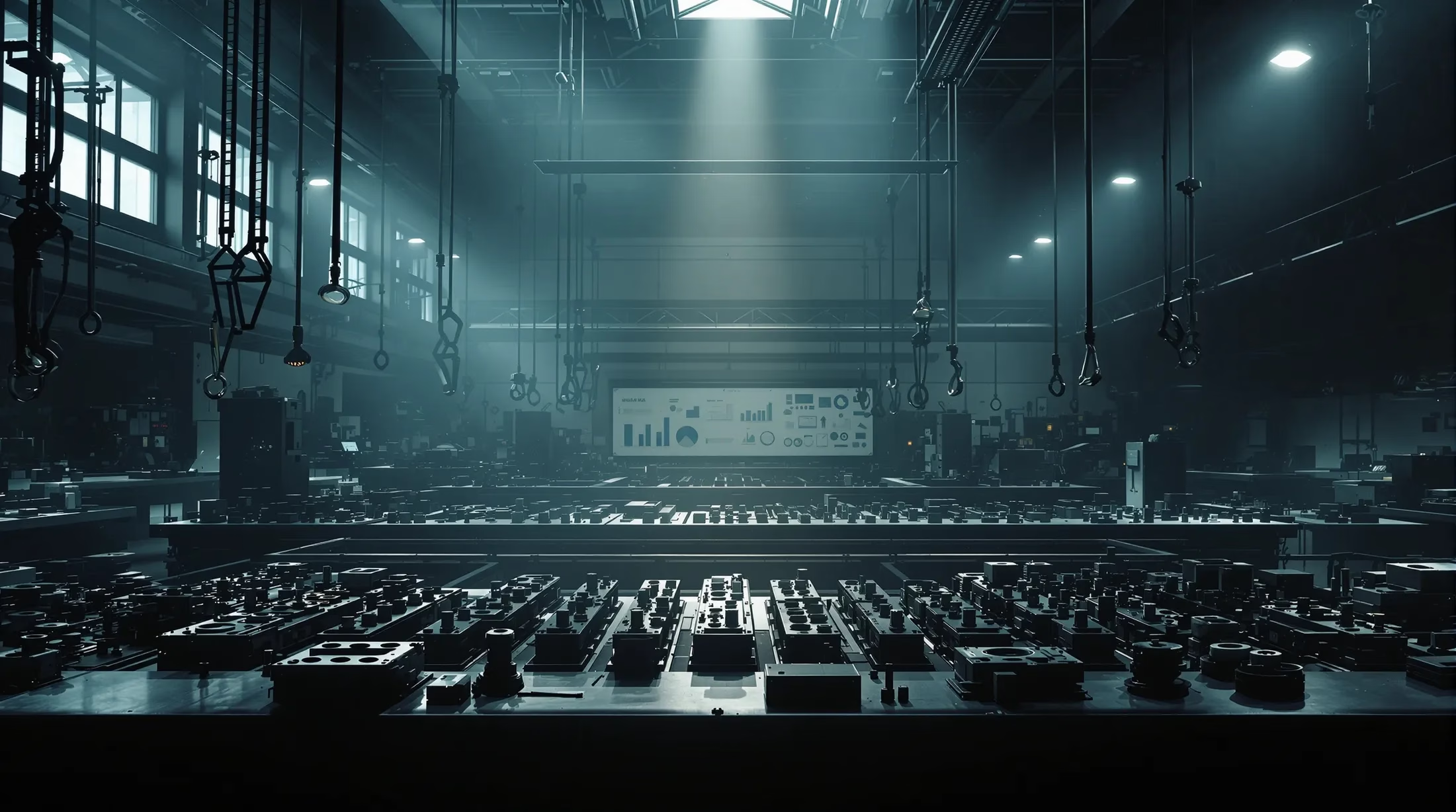Cellular Manufacturing: Key Concepts, Benefits, and Implementation
Discover how cellular manufacturing revolutionizes production efficiency by transforming traditional assembly lines into dynamic, self-contained work cells. This comprehensive guide explores the core principles, benefits, and implementation strategies that make cellular manufacturing a game-changing approach in modern industrial settings.
Understanding Cellular Manufacturing
Cellular manufacturing is a production technique that organizes workstations and equipment into dedicated cells or groups, creating an efficient workflow system that dramatically improves manufacturing processes. This approach is widely implemented in lean manufacturing setups across various industries globally. Each cell functions as a mini production line, containing all necessary machinery and multiskilled operators who collaborate as a cohesive team.
What distinguishes cellular manufacturing is its ability to accommodate product variations while maintaining smooth operations. Rather than traditional assembly line configurations where stations are arranged by function, cellular manufacturing groups machines and workstations based on the production requirements of specific product families. This strategic arrangement facilitates the seamless transition of raw materials into finished products, reducing transportation waste and minimizing production delays.
The Principles of Lean Thinking in Cellular Manufacturing
Cellular manufacturing fundamentally embodies lean thinking principles, focusing on waste elimination, continuous improvement, and optimization of resources. Each manufacturing cell is meticulously designed to contain all the equipment and personnel necessary to produce complete products or families of similar items. This approach aligns perfectly with lean manufacturing’s core ideology of maximizing customer value while minimizing waste throughout the production process.
- Visual management implementation
- Standardized work procedures
- Immediate problem-solving capabilities
- Rapid bottleneck identification
- Enhanced quality control measures
The Role of One-Piece Flow in Enhancing Production
One-piece flow represents a cornerstone principle within cellular manufacturing that dramatically enhances production efficiency. Unlike traditional batch processing where components move through production in large groups, one-piece flow involves moving individual parts through each manufacturing step without interruption. This approach creates a continuous movement of products through the cell, significantly reducing work-in-progress inventory and decreasing lead times.
| Benefit | Impact |
|---|---|
| Quality Control | Immediate defect detection at source |
| Flexibility | Rapid product variant changeovers |
| Production Speed | Eliminated waiting time between processes |
| Inventory Levels | Reduced work-in-progress |
Key Benefits of Cellular Manufacturing
Cellular manufacturing offers numerous strategic advantages that significantly transform production operations across various industries. By organizing workstations into dedicated cells based on product families, manufacturers experience substantial improvements in overall efficiency and productivity. This approach combines the best elements of product layouts with the versatility of specialized equipment arrangements, creating a manufacturing ecosystem that responds rapidly to changing market demands.
- 10-30% increase in productivity
- 60-70% reduction in work-in-progress inventory
- Up to 90% shorter lead times
- Enhanced team communication
- Improved problem-solving capabilities
Increased Production Velocity and Flexibility
One of the most significant advantages of cellular manufacturing is its dramatic impact on production velocity. By organizing equipment and personnel into dedicated cells, manufacturers can reduce setup times by up to 80% compared to traditional production lines. This reduction occurs because machines within cells are specifically configured for product families with similar processing requirements, eliminating lengthy changeovers between different product types.
Flexibility represents another crucial benefit of the cellular approach. Unlike rigid assembly lines designed for mass production of identical items, manufacturing cells can efficiently accommodate product variations and changing customer requirements. This adaptability stems from the cell’s compact design, multiskilled operators, and specialized yet versatile equipment, enabling manufacturers to adjust production volumes or introduce new product variants with minimal disruption.
Reduced Capital Requirements and Resource Efficiency
Cellular manufacturing delivers substantial financial advantages through optimized capital utilization compared to traditional production systems. The implementation typically reduces the total machine count, as equipment utilization rates increase from the industry standard 40% to over 70%. This efficiency improvement stems from selecting right-sized equipment for specific cell requirements rather than investing in large, general-purpose machinery. The cellular layout also minimizes the need for material handling equipment like forklifts and conveyors, further reducing capital investments.
- 30-40% reduction in floor space requirements due to compact cell arrangements
- Increased labor productivity through specialized expertise development
- Significant reduction in work-in-progress inventory
- Higher equipment utilization rates (70% vs. 40% industry average)
- Minimized material handling equipment needs
Implementing Cellular Manufacturing
The transformation from traditional to cellular manufacturing requires a systematic approach. This strategic shift involves converting existing production processes into specialized cells designed for specific product families with similar geometrical features and processing requirements. Organizations typically implement this change in stages to maintain operational continuity.
Assessing Current Conditions with PQ Analysis
Product-Quantity (PQ) analysis provides the foundational data needed for successful cellular implementation. This analytical method creates a comprehensive matrix mapping products against production volumes, identifying high-volume product families ideal for dedicated cells. The analysis reveals natural groupings based on similar processing requirements and volumes, establishing clear implementation priorities.
| Analysis Component | Purpose |
|---|---|
| Process Mapping | Document machine operations, material movements, and inspection points |
| Workflow Visualization | Identify non-value-adding activities and bottlenecks |
| Product Grouping | Determine optimal cell configurations and equipment needs |
Transitioning to a Process-Based Layout
The shift from functional to process-based cellular arrangements demands meticulous planning. Unlike traditional layouts grouping similar machines together, process-based layouts organize equipment according to product family operation sequences. This reorganization minimizes transport distances and creates continuous material flow.
Optimal cellular layouts typically feature U-shaped or circular arrangements, enabling efficient operator movement and simultaneous machine monitoring. Companies often utilize simulation tools to test various configurations before implementing physical changes, ensuring the most effective arrangement of machines, tools, and workstations.
Continuous Improvement through Kaizen and Six Sigma
Cellular manufacturing creates an ideal environment for ongoing optimization through Kaizen and Six Sigma methodologies. Kaizen events involve cell teams conducting focused 3-5 day improvement projects, leveraging operator knowledge to identify and eliminate waste. Six Sigma complements these efforts by providing statistical rigor through the DMAIC framework:
- Define – Identify specific cell performance issues
- Measure – Collect relevant process data
- Analyze – Determine root causes of problems
- Improve – Implement targeted solutions
- Control – Maintain and monitor improvements
Environmental and Resource Benefits
Cellular manufacturing delivers significant environmental advantages through its efficient design principles. By organizing production into self-contained cells with right-sized equipment, manufacturers can dramatically reduce their ecological footprint while improving operational performance. This approach minimizes resource consumption by eliminating unnecessary transportation between workstations and reducing energy requirements of oversized machinery.
- 30-40% reduction in floor space requirements
- Lower heating, cooling, and lighting demands
- Reduced work-in-progress inventory
- Minimized raw material extraction and processing
- Decreased transportation energy usage
Reducing Overproduction and Waste
Cellular manufacturing directly addresses overproduction – one of the most environmentally damaging forms of manufacturing waste. The close proximity of operations within cells enables rapid feedback loops, allowing production to adjust quickly to actual demand rather than forecasts. This approach can reduce overproduction by up to 80% compared to traditional batch manufacturing systems.
- 25-30% less scrap generation due to improved quality control
- Elimination of partially completed inventory between workstations
- Reduced material waste from obsolescence and damage
- Decreased packaging waste from internal transportation
- Improved material utilization through one-piece flow
Energy Consumption and Pollution Control
| Benefit Area | Impact |
|---|---|
| Energy Usage | 15-25% reduction compared to traditional layouts |
| Emissions Points | Fewer monitoring locations required |
| Hazardous Materials | Reduced active use and storage requirements |
| Pollution Control | Up to 30% reduction in overall footprint |
Challenges and Considerations in Cellular Manufacturing
The transition from traditional manufacturing methods to cellular production requires systematic planning and understanding of both technical and organizational factors. Companies typically need 6-12 months for initial implementation, with full optimization continuing for 1-2 years as teams refine cell operations and overcome productivity adjustments.
Investment in New Equipment
- Initial investment ranges from $100,000 to $500,000 per cell
- ROI periods typically span 12-24 months
- Specialized fixtures and tools for one-piece flow operations
- Training costs for new equipment operation
- Facility modification expenses for cellular layout
Despite substantial upfront costs, organizations implementing proper equipment investments report 15-25% reductions in long-term capital requirements through improved utilization rates and elimination of redundant machinery. This optimization balances flexibility with efficiency, allowing cells to accommodate product variations while maintaining high productivity levels.
Potential Disruption of Pollution Control Measures
The reconfiguration of manufacturing spaces during cellular implementation presents significant environmental compliance challenges. During equipment relocation and process reorganization, existing ventilation systems, emissions control equipment, and waste management processes often require extensive modifications. Implementation data shows that companies allocate 8-15% of their total cellular manufacturing budget specifically for updating and reconfiguring environmental control systems to maintain compliance while optimizing new layouts.
- Disruption of existing ventilation systems
- Modification requirements for emissions control equipment
- Reorganization of waste management processes
- Changes in material flow patterns
- Altered timing of emissions generation
| Challenge Area | Solution Strategy |
|---|---|
| Material Flow Changes | Comprehensive environmental impact assessments |
| Process Sequencing | New control strategy development |
| Cell Configuration | Coordination between production and environmental teams |
| Control Effectiveness | Enhanced localized containment systems |
Organizations that successfully navigate these challenges often discover that properly designed cells can enhance pollution control effectiveness. These improvements manifest through more localized containment systems, reduced transportation emissions, and improved monitoring capabilities. This optimization ultimately leads to more sustainable manufacturing operations while maintaining strict environmental compliance standards.







